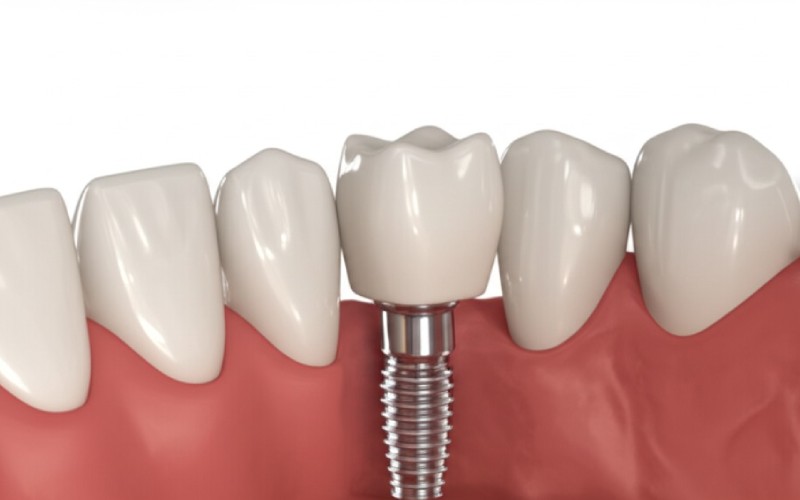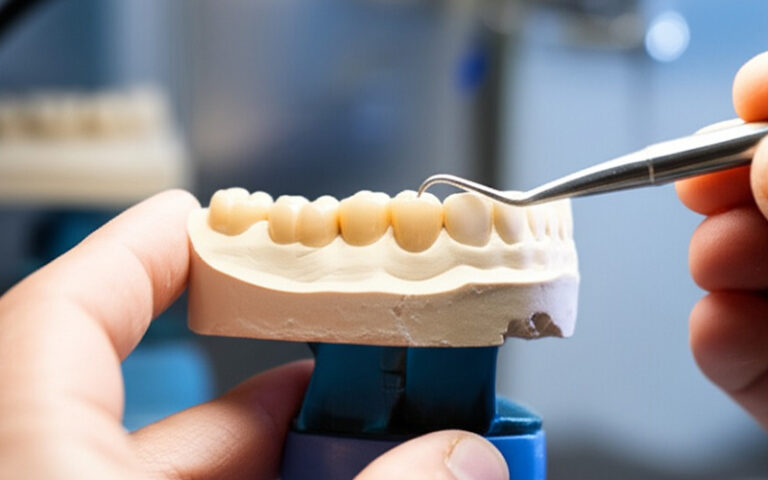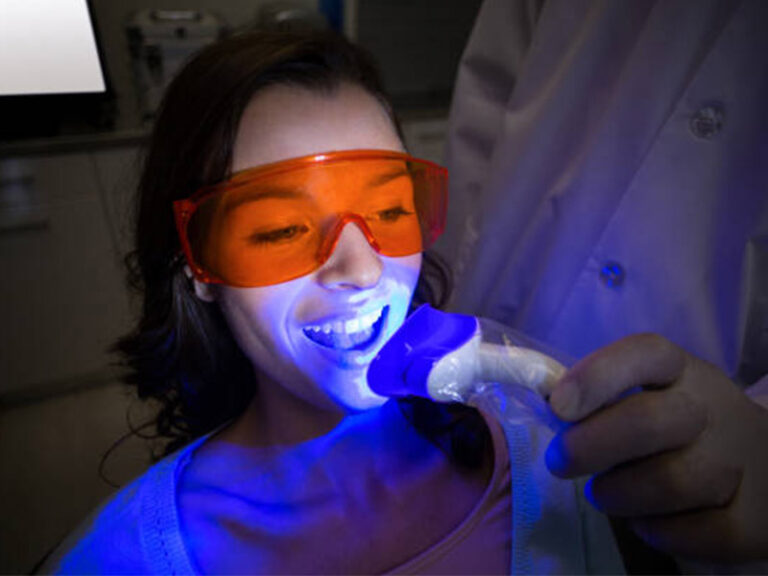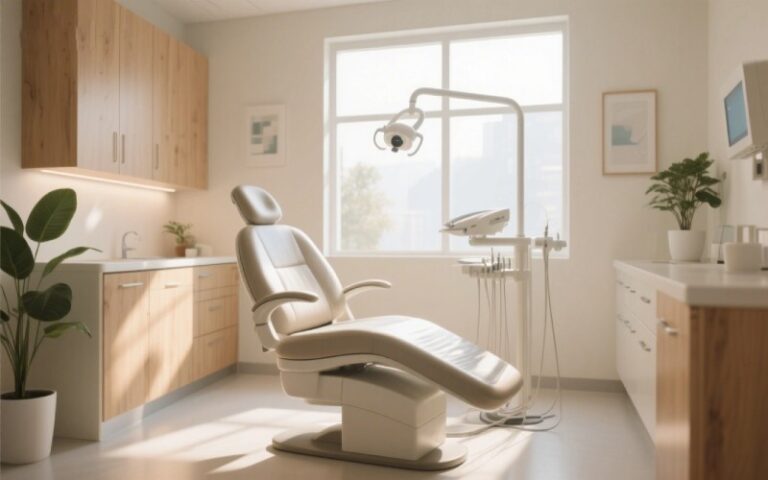
What Is Hypodontia? A Guide to Understanding Congenitally Missing Teeth
This article is for anyone who has been told they have hypodontia, or for parents whose child has missing teeth. We will walk through this topic in simple terms. You will learn what hypodontia is, what causes it, and the best ways to treat it. My goal is to give you clear answers and peace of mind.
Inhaltsübersicht
What Exactly Is Hypodontia?
So, what does hypodontia really mean? In the simplest words, hypodontia is the term for being born without one or more teeth. These are often called congenitally missing teeth. This is not about losing a tooth to an injury or decay. This is a developmental condition, meaning the tooth bud never formed in the first place. When you have hypodontia, you have an absence of teeth that were never there to begin with.
This condition usually affects the permanent dentition, which is your set of adult teeth. It can happen with any tooth, but some teeth are missing more often than others. For example, the teeth next to your front teeth (lateral incisors) and the teeth in front of your molars (premolars) are common culprits. Understanding that hypodontia is a natural-born condition is the first step. It is not anyone’s fault, just a blip in the way your teeth developed. This specific type of hypodontia is something dentists see often. The Journal of the American Dental Association has published many articles on this.
How Common is the Prevalence of Dental Agenesis?
You might be wondering if you are alone with this condition. The answer is a big no! The prevalence of hypodontia is surprisingly high. In fact, hypodontia is one of the most common dental developmental issues. Studies, including a review of prevalence and etiology, show that about 3% to 8% of people have some form of hypodontia, not counting wisdom teeth. If we include the four wisdom teeth, that number jumps much higher, as many people are missing one or all of them.
The prevalence of dental agenesis (another name for missing teeth) shows that this is a widespread issue. Most people with hypodontia are only missing one or two permanent teeth. It is less common to be missing many teeth, like six teeth or more. This condition, hypodontia in the permanent dentition, is something that dentists are very familiar with. A survey of congenitally missing permanent teeth helps dentists understand these patterns. So, if you have hypodontia, you are part of a very large group.

What is the Main Cause of Hypodontia?
So, why does this happen? The main cause of hypodontia is your genes. It often runs in families. If one of your parents has missing teeth, you are more likely to have hypodontia. Scientists have found that a specific gene passed down from a parent can cause hypodontia. The genetic basis of tooth development is complex, and a small change in a single gene can stop a tooth from forming. This explains why we often see hypodontia in families.
The aetiology of hypodontia (which is just a fancy way of saying the cause) points strongly to genetics. During early development, a special band of tissue called the dental lamina is responsible for starting the process of tooth formation. Think of it like a factory assembly line for teeth. If a gene responsible for this process has a mutation, it can shut down production in specific areas of the dental lamina. This results in congenitally missing teeth. This is a key part of tooth development and dental defects. A faulty gene is the main reason for hypodontia.
Can Both Genes and Environment Contribute to Hypodontia?
While a gene is the star of the show, it is not always a solo act. Both genetic and environmental factors can contribute to hypodontia. This means that while you might have a gene that makes you prone to hypodontia, certain things in the environment could also play a part. These are known as risk factors for hypodontia.
What kind of environmental factors on hypodontia are we talking about? Some examples hypodontia have been proposed to be linked to are infections, trauma to the mouth area during infancy, or certain medical treatments like chemotherapy. A mother’s health during pregnancy can also have an impact. While genetic factors are the primary driver, these other issues may contribute to hypodontia. It’s important to know that these outside factors are much less common causes than the gene itself. The association to hypodontia is strongest with family history.
What is the Real Impact of Hypodontia on Daily Life?
Living with missing teeth can have a real impact of hypodontia on your life. For many individuals with hypodontia, the first concern is appearance. A gap in your smile can make you feel self-conscious. But the impact goes beyond looks. Hypodontia may pose functional limitations. For example, having missing posterior teeth can make it harder to chew food properly.
The impact of hypodontia also affects the health of your other teeth and your jaw. When a tooth is missing, the adjacent teeth can start to drift or tilt into the empty space. This can cause problems with your bite. Over time, the lack of a tooth can also lead to bone loss in that area of the jaw. This is because the tooth root helps keep the jawbone strong. The teeth and jaws work together as a system, and a missing part can throw the whole system off balance. This is why plausible that hypodontia may pose these challenges.
How Does a Dentist Diagnose Missing Permanent Teeth?
Finding out if you or your child has hypodontia is a straightforward process. A dental professional will usually spot the signs during a regular check-up. The first clue is often when baby teeth, also known as primary teeth, do not fall out on schedule. These are called retained primary teeth. This happens because there are no adult teeth underneath to push them out. The permanent teeth had been exfoliated is a term for when baby teeth fall out, and in hypodontia, this may not happen.
To confirm the diagnosis, the dentist will take dental X-rays. The X-rays give a clear picture of what is happening under the gums. They will show if there are missing permanent teeth or if they are just slow to come in. The X-rays will confirm the congenital absence of teeth and show exactly which teeth are not there. This is a critical step in creating a treatment plan. The X-ray helps see if there is hypodontia of the permanent teeth.
What Are the Main Treatment Options for Hypodontia?
Once hypodontia is diagnosed, the good news is that there are great treatment options available. There is no one-size-fits-all answer. The best treatment for hypodontia depends on several things: your age, the number of missing teeth, and the position of your existing teeth. Your dentist will work with you to create a personalized treatment plan. The goal of the treatment of hypodontia is always to restore function and give you a smile you feel great about.
For patients with hypodontia, the journey might involve a team of dental specialists, including an orthodontist and a surgeon. The main treatment options include leaving the space, closing the space with braces, or replacing the missing tooth. For a person with only two missing teeth, the plan will be different than for patients with severe hypodontia. The severity of hypodontia guides the treatment. It’s a team effort to manage hypodontia and associated issues.
Is Orthodontic Treatment a Good Solution for Treating Hypodontia?
Yes, orthodontic treatment is often a key part of treating hypodontia. Braces can work wonders for people with missing teeth. There are two main ways an orthodontist can help. The first option is to use braces to close the gap where the tooth is missing. This involves carefully moving the adjacent teeth together to fill the space. This can be a great solution if the nearby teeth are the right shape and size.
The second option for orthodontic treatment is to open or hold a space for a future replacement, like a Zahnimplantat. Braces can move teeth to create the perfect amount of room for an implant to be placed later. This is a very common part of the treatment of hypodontia. The orthodontic treatment sets the stage for a successful long-term result. For people with hypodontia, this is a very important step.
What About Dental Implants for Congenitally Missing Teeth?
For many people with congenitally missing teeth, dental implants are the best solution. A dental implant is a small, titanium post that is placed into the jawbone to act like a tooth root. A custom-made crown is then attached to the post. The result looks, feels, and works just like a natural tooth. This is an excellent way to restore the permanent dentition.
Dental implants are especially helpful for hypodontia of the permanent teeth because they are a long-term solution. They help preserve the jawbone and keep adjacent teeth from shifting. This treatment is usually done after the jaw has finished growing, typically in the late teens or early twenties. Patients with missing teeth who get implants often say it changes their life, giving them back the ability to eat and smile with confidence. This is a top-tier treatment of hypodontia.

What Should I Know About Hypodontia in Children?
Discovering that your child has hypodontia can be worrying. But early diagnosis is a good thing. The main thing to know about hypodontia in children is that it requires a long-term view. The treatment plan will evolve as your child grows. It is very important to monitor the development of teeth in children. The occurrence of hypodontia is often first noticed when deciduous teeth associated with the missing tooth do not fall out.
For children with hypodontia, the first step is often just to watch and wait. A pediatric dentist will monitor the growth of the jaw and the position of the other teeth. Sometimes, missing primary teeth can be a sign of hypodontia, though this is less common. Other times, the primary molar teeth may be kept for as long as possible. The features of hypodontia like hypodontia and microdontia (small teeth) will be assessed. The agenesis of teeth in a child is managed carefully over many years, with treatments like braces or implants planned for when they are older.
Wichtigste Erkenntnisse zum Mitnehmen
- Hypodontia is Common: It means being born with missing teeth and is one of the most common dental issues. It is usually caused by a gene.
- Diagnosis is Simple: A dentist can diagnose hypodontia with a clinical exam and dental X-rays, often after noticing that baby teeth haven’t fallen out.
- It Affects More Than Your Smile: Missing teeth can cause problems with chewing and can cause other teeth to shift out of place.
- Many Treatment Options Exist: The treatment for hypodontia is personalized. It can include orthodontic treatment to close gaps or prepare for replacements.
- Implants Are a Great Solution: Dental implants are a popular and effective long-term solution for replacing congenitally missing teeth in adults.
- A Team Approach is Best: Managing hypodontia often involves a team, including your general dentist, an orthodontist, and possibly other specialists, to create the best treatment plan.




